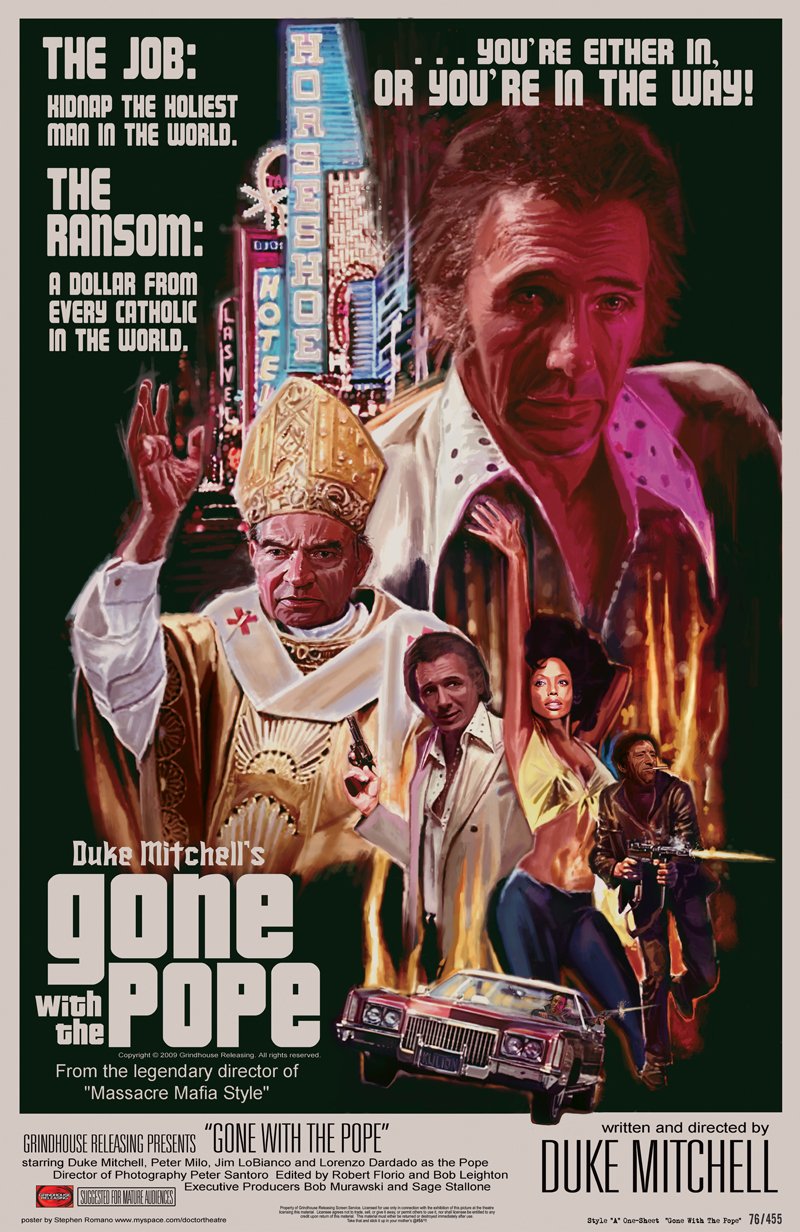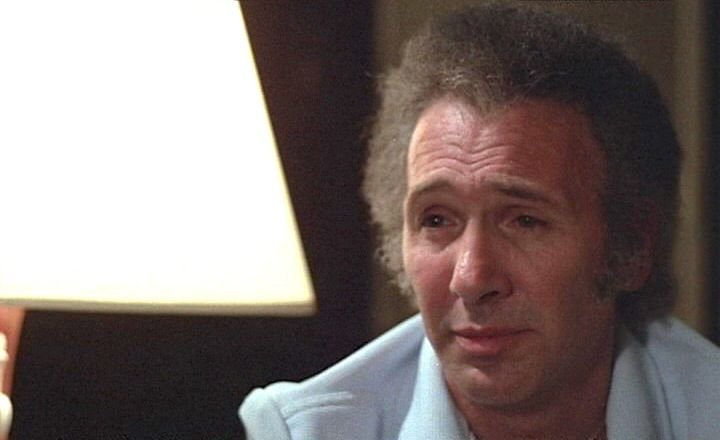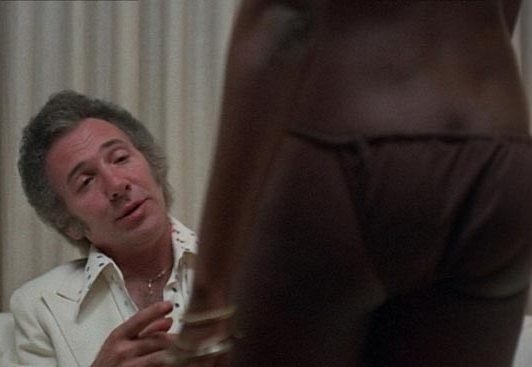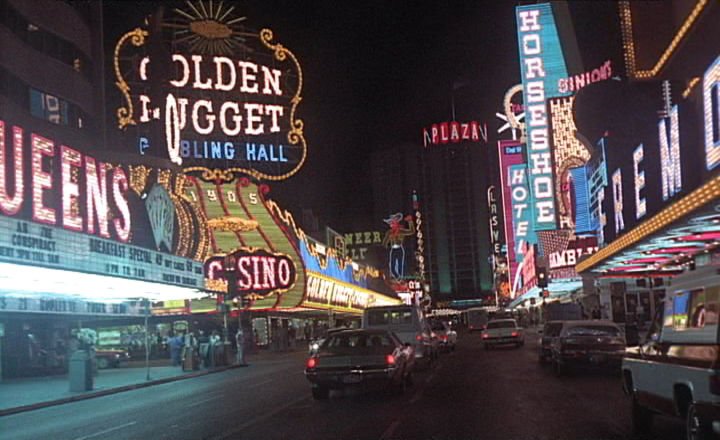GONE WITH THE POPE: The Grindhouse Version Of A John Cassavetes Film
If you wanted to compare nightclub entertainer-turned-filmmaker Duke Mitchell to another director, the most logical comparison would be - believe it or not - John Cassavetes. Look past the exploitation flick content and the entry-level performances and you'll see a filmmaker who was looking to transform life experience into cinema, bravely improvising his films from a place of raw passion and crafting his work to reflect an iconoclastic personal philosophy. Like Cassavetes, he called it as he saw it and was willing to put everything on the line to do it his way. His second and final film, the posthumously-released Gone With The Pope, sticks to this aesthetic and delivers a singular, totally personalized combination of crime flick and religious thought piece. Mitchell toplines as Paul, an aging criminal fresh out of prison. He feels responsibility for fellow ex-cons Luke (Jim LoBianco), Peter (Peter Milo) and the Old Man (Lorenzo Dardado) and pulls off a daring multi-person assassination to earn money to help them transition into civilian life.Using the money, Paul sweeps his cronies off on a round-the-world cruise where he hatches a wild plan: the kidnap the Pope (also Dardado) and ransom him to the Catholics of the world at a price of fifty cents per believer. Against the odds, he pulls off the kidnapping but it doesn't play out as he planned - and there is a reckoning of the philosophic/cosmic variety in the cards for Paul and his partners.
His second and final film, the posthumously-released Gone With The Pope, sticks to this aesthetic and delivers a singular, totally personalized combination of crime flick and religious thought piece. Mitchell toplines as Paul, an aging criminal fresh out of prison. He feels responsibility for fellow ex-cons Luke (Jim LoBianco), Peter (Peter Milo) and the Old Man (Lorenzo Dardado) and pulls off a daring multi-person assassination to earn money to help them transition into civilian life.Using the money, Paul sweeps his cronies off on a round-the-world cruise where he hatches a wild plan: the kidnap the Pope (also Dardado) and ransom him to the Catholics of the world at a price of fifty cents per believer. Against the odds, he pulls off the kidnapping but it doesn't play out as he planned - and there is a reckoning of the philosophic/cosmic variety in the cards for Paul and his partners. Like Mitchell's other film, Massacre Mafia Style, Gone With The Pope wears its raw technique on its sleeve. You get the impression that everyone in front of the camera is simply being themselves instead of creating characters - a romantic interest played by Jeanne Hibbard is memorably wooden as she visibly reads from cue cards - and the structure seems to follow the twists and turns of what was on Mitchell's mind at the moment rather than conventional narrative logic.That said, these rough edges weave a spell, allowing Gone With The Pope to create an alternative reality that will draw in adventurous viewers. This magical half-grindhouse/half-arthouse world revolves around Mitchell is kept afloat by Mitchell's efforts on both sides of the
Like Mitchell's other film, Massacre Mafia Style, Gone With The Pope wears its raw technique on its sleeve. You get the impression that everyone in front of the camera is simply being themselves instead of creating characters - a romantic interest played by Jeanne Hibbard is memorably wooden as she visibly reads from cue cards - and the structure seems to follow the twists and turns of what was on Mitchell's mind at the moment rather than conventional narrative logic.That said, these rough edges weave a spell, allowing Gone With The Pope to create an alternative reality that will draw in adventurous viewers. This magical half-grindhouse/half-arthouse world revolves around Mitchell is kept afloat by Mitchell's efforts on both sides of the  camera.As a director, he jumps from one scene to the next with breathless energy. Whether he's crafting a multi-kill assassination setpiece a la Bring Me The Head Of Alfredo Garcia or a silent, introspective montage of the ex-cons on their boat, there's the excitement of watching Mitchell put together every idea that excites him. The narrative veers from raunchy trash-talk to bloody violence to sober, deeply felt expressions of religious philosophy and yet Mitchell manages to thread the needle through all these styles in his own handcrafted way.As an actor, Mitchell is a ball of fire. He carries himself with a sense of macho/showbiz swagger that doesn't exist in this world anymore, setting the tone for the film with an impassioned performance as his character hustles his way through the story. Massacre Mafia Style fans who loved hi
camera.As a director, he jumps from one scene to the next with breathless energy. Whether he's crafting a multi-kill assassination setpiece a la Bring Me The Head Of Alfredo Garcia or a silent, introspective montage of the ex-cons on their boat, there's the excitement of watching Mitchell put together every idea that excites him. The narrative veers from raunchy trash-talk to bloody violence to sober, deeply felt expressions of religious philosophy and yet Mitchell manages to thread the needle through all these styles in his own handcrafted way.As an actor, Mitchell is a ball of fire. He carries himself with a sense of macho/showbiz swagger that doesn't exist in this world anymore, setting the tone for the film with an impassioned performance as his character hustles his way through the story. Massacre Mafia Style fans who loved hi s monologues in that film will be happy to know he gets a similar moment here, when he outlines his grievances against organized religion's failings to the Pope himself. There's never a dull moment from him and his intense presence holds the film together.To sum up, Gone With The Pope is one-of-a-kind experience tailor-made for the cult movie crowd. Only a select group will be able to look past the variable performances and rough-hewn filmmaking - but those who can will be rewarded with an all-too-rare opportunity to see the grindhouse's answer to John Cassavetes weave together a complex, passionate film out of sheer will. It would make one hell of a double feature with Cassavetes' Killing Of A Chinese Bookie - and anyone who loves that film will notice a surprising kinship between two different artists with a similar independent streak.
s monologues in that film will be happy to know he gets a similar moment here, when he outlines his grievances against organized religion's failings to the Pope himself. There's never a dull moment from him and his intense presence holds the film together.To sum up, Gone With The Pope is one-of-a-kind experience tailor-made for the cult movie crowd. Only a select group will be able to look past the variable performances and rough-hewn filmmaking - but those who can will be rewarded with an all-too-rare opportunity to see the grindhouse's answer to John Cassavetes weave together a complex, passionate film out of sheer will. It would make one hell of a double feature with Cassavetes' Killing Of A Chinese Bookie - and anyone who loves that film will notice a surprising kinship between two different artists with a similar independent streak.


